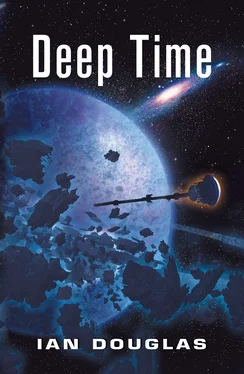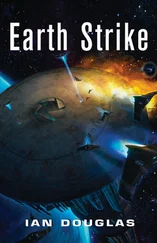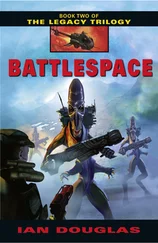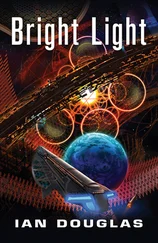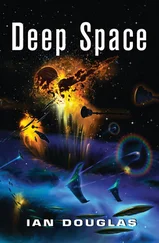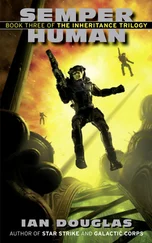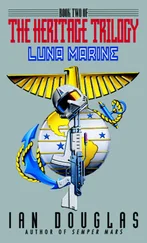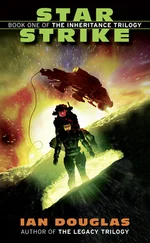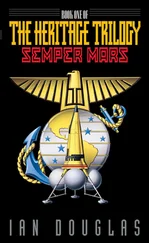Further, the High Guard made sure Vesta was always closely watched. The site of a large, mostly automated mining facility, the asteroid possessed a set of ten-kilometer-long magnetic launch rails designed to fire canisters of nano-extracted and -processed ore from the jumbled, frozen crust into low-energy transit loops that would bring them within capture range of Earth-based capture vessels within three to five years, depending on the constantly changing angles and distances between worlds. Fearing that terrorists or other rogue forces might easily change the launch parameters and turn the launch rails into titanic long-range weapons ideal for planetary bombardment, the High Guard was stationed there as protection against that scenario. In truth, it was not very likely to happen. For one thing, it would be a high-risk, low-reward endeavor, since incoming canisters were closely followed by radar and lidar, and intercept missions could easily nudge them into harmless orbits. But Earth’s governments remained nervous about falling rocks, especially deliberately chucked falling rocks, almost three centuries after Wormwood Fall, and High Guard frigates like the Concord were there to provide some measure of reassurance.
They were not designed to engage alien starships of unknown potential.
Dahlquist wanted to shoot a message back to Gray. The problem was that the High Guard, though technically a part of the USNA Navy during the current hostilities with the Confederation, was not under Navy jurisdiction, and a line officer like Gray did not have the authority to order High Guard assets off station.
Of course, the real reason he was hesitating had more to do with Gray’s background.
Like most USNA Guard and Naval officers, Dahlquist was a Ristie. The United States of North America was supposed to be a classless society, but that was fiction and always had been. Always there were “haves” as distinguished from “have-nots.” Money was not as big a factor in modern society as it once had been; the nanotech revolution had long ago made wealth-based distinctions largely irrelevant. But power , especially the power available to those with better technology and better access to information, was another matter altogether. Nowadays, those who had more advanced electronic implant technology, those who had life extension and better nanomed support, those who had connections in the larger “have” networks of government and the military— those were the new social elite. Risties was the slang term for the cultural aristocrats who called the shots in modern civilization.
Of course, they would never use the term themselves.
They did, however, use the term Prim , and the fact was that Gray was a well-known Primitive. Sure, Gray had acquired that technology when he left the Manhat Ruins decades ago, but Dahlquist couldn’t shake the subtle prejudice against him and people like him. They hadn’t grown up with the tech, had never been completely comfortable with it … and that, in the minds of most Risties, was telling.
Dahlquist would never have admitted to technocybernetic prejudice, of course, but he couldn’t shake the nagging feeling that “Sandy” Gray didn’t really know what he was doing, that he tended to overlook some of the information available to him over the various data networks because he hadn’t grown up with the technology.
That in certain subtle ways, he wasn’t fully human .
And that, when all was said and done, was what it was all about. Humans were defined by their technology. That was one reason the USNA had been fighting the Sh’daar and, more recently, the Confederation: humans were what they were because of their tools, from fire to starships to neurocybernetic implants.
And yet, what it all came down to was that what Gray was ordering Dahlquist to do was technologically challenging, dangerous, and a long shot at best. He was to accelerate toward this oncoming alien vessel and lay down a spread of missiles and kinetic-kill projectiles in the hopes of disabling it. There was no question of matching course and speed with the thing, not when it was burning its way across the system at a hair under c . But Concord would still have to get uncomfortably close, and loosing that much kinetic energy and flying debris when you just might fly into the high-velocity cloud yourself was not Dahlquist’s idea of a reasonable request.
There was the political angle to consider, too.
If the Concord openly helped the America —and from the data feed Dahlquist was getting, these orders were part of a USNA operation against unknown aliens working with the Confederation—he could technically be committing treason.
Damn it, that Prim was putting Dahlquist in an impossible situation!
“Comm,” he said. “Send a reply. Ask for … clarification.”
“Sir, they won’t get the reply for—”
“I know. Send it.”
“Aye, aye, sir.”
Dahlquist had better things to do than jump through hoops held by that perverted little Prim …
USNA Star Carrier America
In pursuit
0105 hours, TFT
“Looks like the pursuing fighters were able to close with the target, Admiral,” Commander Dean Mallory told him. “I wish there’d been more than four of them, though.”
“All they need to do is slow that damned alien down a bit,” Gray replied. “That, and keep him from transiting over to metaspace.”
“We don’t know how far up the side of the sun’s gravity well they need to be in order to jump,” Mallory said, thoughtful. “Would the idea be to just try to damage him?”
“It’s a long shot, I know,” Gray replied. “If you or your team have any ideas, tell me now.”
“Your old sand trick occurs to me, Admiral,” Mallory said, grinning. “‘The Gray Maneuver,’ they called it in Tac-Combat download training.”
Gray snorted. “It’s a dangerous option here,” he said. “We’d risk vaporizing those four fighters we have on the alien’s tail.”
“Sandy” Gray had gotten his nickname two decades earlier, when he’d released clouds of sand—the warheads of AMSO anti-missile weapons—at close to the speed of light. Even a single grain of sand traveling at that speed was deadly, and a cloud of them could disintegrate a ship, wipe out a fleet … or even scour the hemisphere of a world with flame. Under certain circumstances, it could be a highly effective weapon, but targeting something as small as a ship was chancy at best, and the danger of scoring an “own goal” in the rough-and-tumble of space combat made the tactic one of desperation.
“True. Of course, only the Concord would be positioned to deliver the shot, anyway.”
“I know—and risk or not, it’s what I asked them to do. Those fighters aren’t going to be able to do much, so it’s probably our only chance.”
AMSO rounds fired by those USNA ships chasing Charlie One and its fighter escorts would be completely ineffective, because both they and the targets were traveling at close to c . But sand released by the High Guard ship, approaching from slightly off the alien’s bow, would impact Charlie with its velocity plus that of the target, which was very close indeed to the speed of light.
“My concern, then,” Gray continued, “is that he might hold off for fear of hitting the USNA fighters behind it.” Something dawned on Gray then, and he scowled, calling up a data feed from America ’s AI, looking for biographical information on Concord ’s captain. He’d pulled down a bare minimum of biographical data on the man before, just enough to verify that he was North American. Right now, Gray needed more.
Читать дальше
